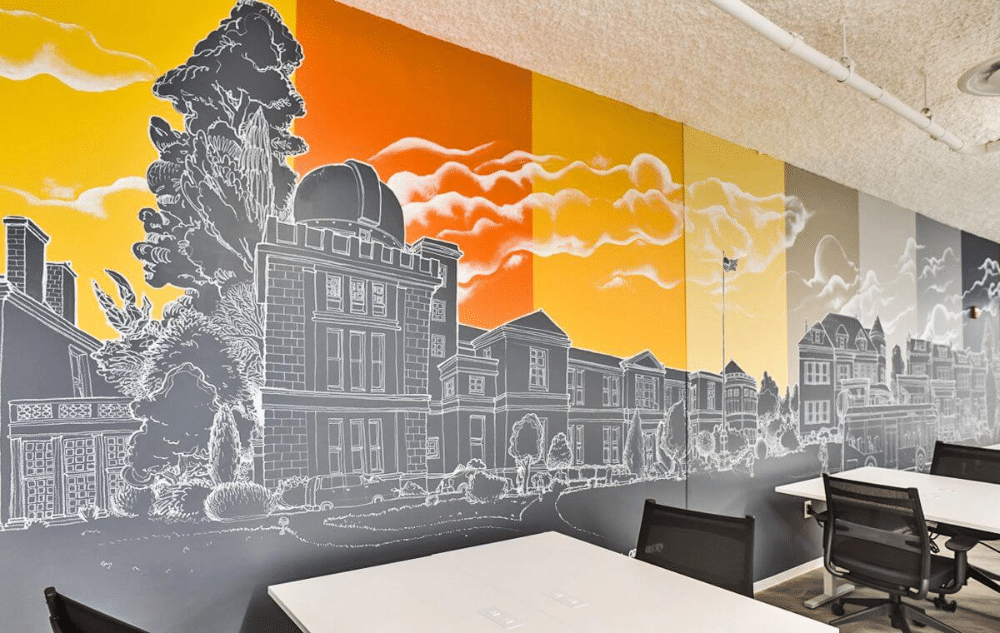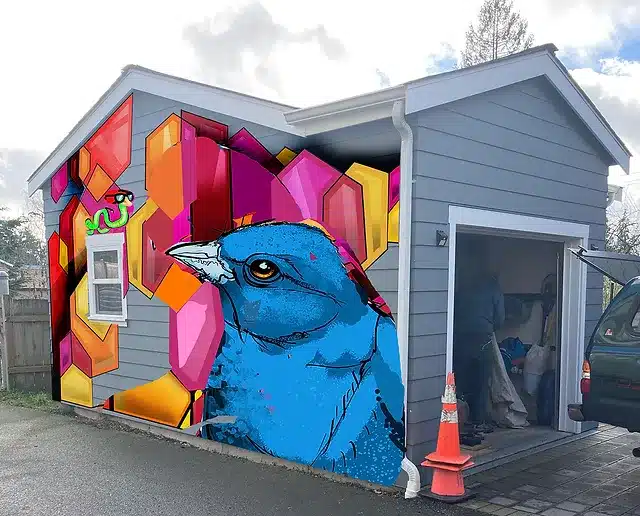For ages, people have employed mural design—a captivating form of artistic expression—to decorate walls and other areas with colorful, meaningful, and eye-catching artwork. Murals have captured people’s attention and added a distinctive element to spaces for centuries, from ancient civilizations to contemporary metropolitan environments. We’ll go into the field of mural design in this piece, discussing its relevance, history, and method for producing eye-catching murals.
Comprehending Mural Design
An expansive piece of art painted or applied directly to a wall, ceiling, or other large surface is called a mural. Murals, as opposed to smaller paintings or artworks, are intended to create a big impression and frequently act as centers of attention in their surroundings. They display a broad variety of subjects, styles, and techniques and can be found in public areas, buildings, galleries, and even private homes, including art and design services that influence innovation and creative expression.

Historical Origins
Murals have been a part of art for thousands of years; examples may be found in the archives of ancient civilizations including Egypt, Greece, and Rome. These ancient murals shed light on the customs, values, and way of life of the period by frequently portraying scenes from religious stories, mythology, or everyday life.
Murals saw a renaissance during the Renaissance when renowned artists such as Leonardo da Vinci, Michelangelo, and Raphael painted famous murals on the walls and ceilings of palaces, public buildings, and churches. These pieces not only demonstrated the artists’ technical skill but also used images to tell compelling tales and deliver strong messages.
Importance and Effect
Murals are highly valuable in terms of culture, society, and the arts. They can be used as instruments for community involvement, activism, storytelling, and cultural preservation. Murals in urban settings frequently add to the neighborhood’s visual character by converting plain walls into colorful representations of personality and creativity.
Murals also can arouse feelings, start discussions, and motivate change. They can recognize historical personalities, promote diversity, address social issues, or just make places more aesthetically pleasing so that people from all walks of life can enjoy them.

The Mural Design Process
The process of painting a mural includes several stages, from ideation to completion. An outline of the standard mural design procedure is provided below:
Development of Concept
The creation of an idea or theme for the artwork is the first stage in the mural design process. This could entail coming up with concepts, investigating the area and target audience, and thinking through the narrative or message the mural would portray. Working together with stakeholders, like clients or people of the community, can guarantee that the mural fulfills its intended function and appeals to its audience.
Planning of Designs
The artist or design team then develops a comprehensive strategy for the mural after the concept has been decided upon. This involves making rough sketches, figuring out the artwork’s dimensions and arrangement, choosing materials and color schemes, and taking care of practical issues like wall access and safety precautions.
Surface Readiness
It is necessary to carefully prepare the surface before painting or applying the mural. The wall may need to be cleaned, primed with a base coat, and marked with grids or guidelines to help in painting. Weather-resistant paints and sealants are frequently utilized for outdoor murals to guarantee their lifetime.
Carrying out
After laying the foundation, the artist starts painting or installing the mural. As the artist brings the concept to life on the wall, this step calls for dexterity, imagination, and meticulous attention to detail. The chosen aesthetic and level of complexity of the artwork will determine which techniques are used, including brushwork, spray painting, stenciling, and digital printing.
Find Details
After the mural is finished, it could be required to apply finishing touches like protective coatings, and touch-up details, and document the artwork. By taking these precautions, the mural’s integrity is maintained and its spectacular appearance is guaranteed for many years to come.
Explore More Sculpture: From Artistic Expression to Sculpture Services
Mural Design Made Easy
Here are some easy starting point ideas for anyone interested in painting their murals:
- Select a Theme: Choose a topic or theme that both you and your audience can get behind.
- Organize Your Design: Draw up your design concepts, taking into account the composition, colors, and scale.
- Assemble the materials: Get the paints, brushes, stencils, and other materials you’ll need for your mural.
- Get the Surface Ready: To guarantee appropriate adherence and durability, prime and clean the wall or surface.
- Put Your Idea Into Practice: Start applying or painting your mural, taking your time to get the right effect.
- Add Final Touches: To improve durability and preserve your artwork, apply sealants or protective coats.
You may paint beautiful mural designs that express your creative vision and leave a lasting impression on your surroundings by using these techniques and your imagination.
Conclusion
To sum up, mural design is a dynamic, significant art form that never stops evolving and inspiring. There are countless chances for creativity, expression, and narrative in this art form, whether you choose to explore its rich history, understand its cultural relevance, or create your murals. Now go ahead and let your creativity run wild and create murals that will have a lasting impact on society.

